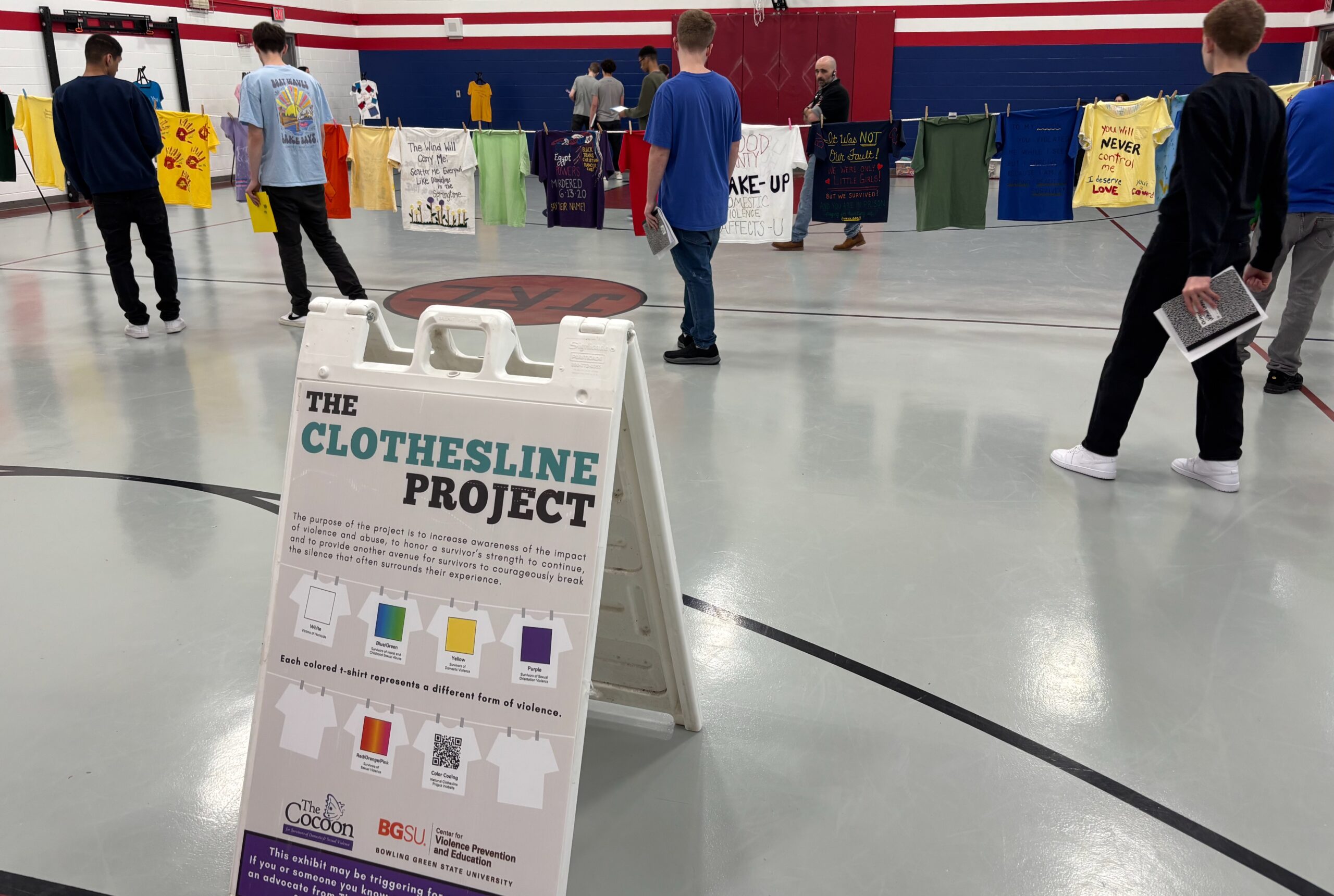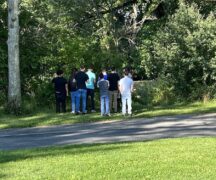By JULIE CARLE
BG Independent News
Fifty T-shirts with messages by domestic and sexual violence survivors filled the space in the gymnasium at the Northwest Ohio Juvenile Residential Center on Friday.
Forty-two young men in the residential treatment center toured the Cocoon’s Clothesline Project display to see, read and reflect on the stories of real people whose lives were forever changed because of violence by perpetrators.
“All the T-shirts were created by someone who has experienced violence. They have a lot to say,” JRC Counselor Elizabeth Johnson-Walsh told them before they viewed the display. “Almost everybody in this room either knows someone who’s experienced violence, you have committed violence, or someone you love has committed violence.”
As they came face-to-face with the T-shirts and the reality of the aftermath of violent behavior, they were expected to take the experience seriously and to write about something that impacted them.
The gymnasium, usually filled with noise and physical activities such as basketball, dodgeball and CrossFit, “had a quiet but interesting vibe,” said JRC Director Montana Crawford as he watched the boys take in the intense messages in the space.
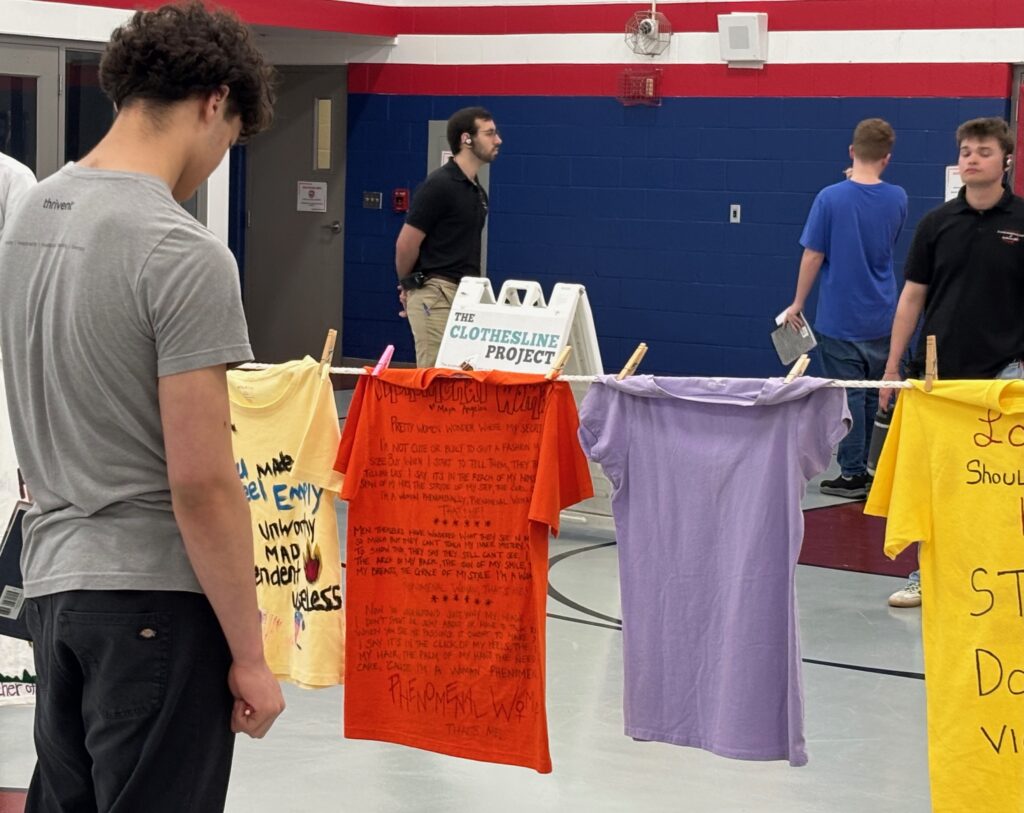
They didn’t rush through the exhibit, but instead, carefully stopped, read the messages, and wrote down their thoughts. The messages on the white shirts, which designated homicides, were hard to see. The messages on the yellow shirts symbolized the one in three women and one in four men impacted by physical abuse.
Red, orange and pink shirts carried the stories of people who were sexually violated, and purple signified violence against individuals who identify as LGBTQ. National statistics indicate one in four women and one in 26 men experience sexual violence in his or her lifetime.
The blue and green were some of the most heart-wrenching, almost hearing the young voices of victims of incest and childhood sexual violence.
When asked how they felt and which shirts impacted them the most, one resident said, “I knew it was a thing to read, but when I read what they felt even years later, it kind of blew my mind.”
Another teen reflected on his mother’s life as a survivor of violence. “She’s been through a lot of abuse throughout my whole childhood. I never really heard that side of it. I never had a conversation with her, but visualizing what was on that shirt, opened my mind more than what it was previously.”
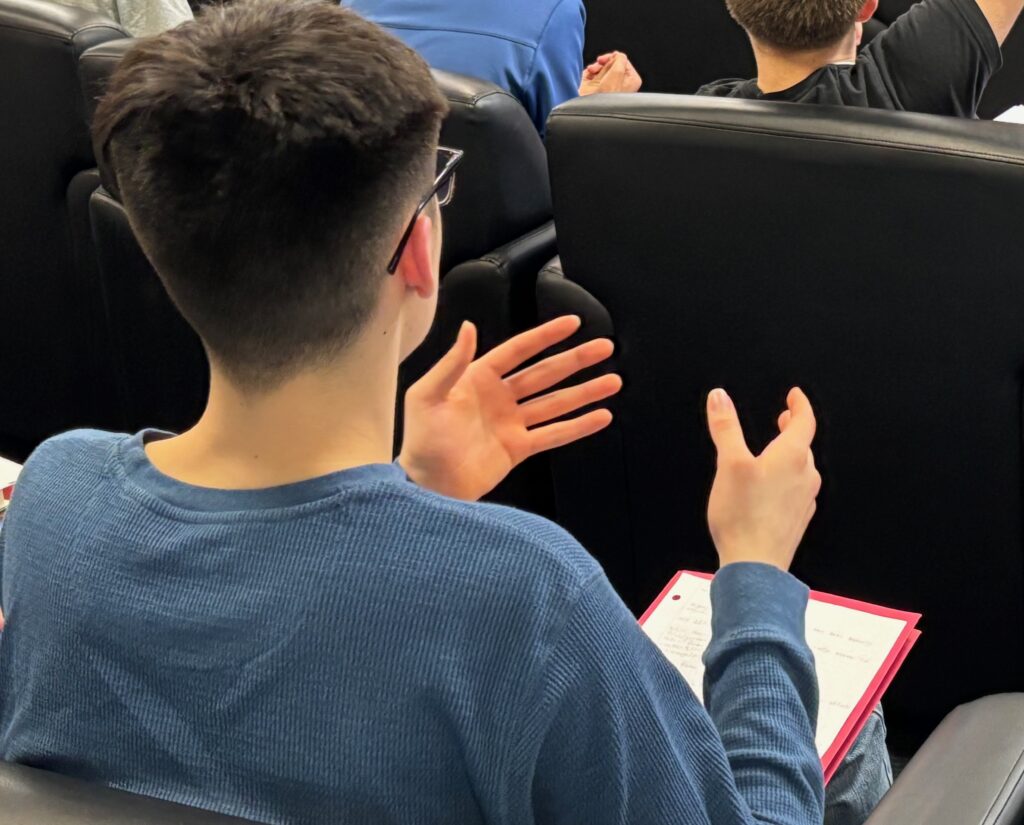
“The ‘thank-you paragraph shirt’ was just wow,” a resident admitted during the debrief session after viewing the shirts. “The pain that survivor went through was unbelievable.”
The group was shocked to learn that the 50 shirts on display were only a fraction of the more than 700 shirts the Cocoon has available for the project, all created by and for Wood County residents, according to Justina Fuqua-Black, Cocoon communications & outreach coordinator.
The shirts represent a spectrum of violence. She acknowledged one teen’s statement that “it is all abuse at the end of the day,” but said “severity obviously might be very different from one person to another. The display really is hard to digest.”
One teen calculated that the 50 shirts accounted for only 7.4 percent of the shirts the Cocoon has. “I went in there thinking, ‘There are a lot of shirts here,’ but knowing it is only a small percentage of the ones in their possession, and only those reported and in Wood County, it’s hard to think about.”

That number is difficult to grasp, Fuqua-Black said, explaining that last year alone, they served nearly 1,000 individuals in the community, not counting children and other family members. “So even the shirts you see don’t ring true to the actual prevalence that is here in the community.”
The Cocoon, the only domestic and sexual violence advocacy center in Wood County, provides advocacy for individuals to confidentially call and talk about their experience with violence, have someone listen, provide emotional support and help them access resources that are available to them.
The statistics she shared represent the incidents reported. The group discussed some of the reasons more people don’t report violence including shame, guilt or society’s perceptions of individuals who experience violence.
One teen suggested, “Education would go a long way in reducing abuses. It just seems sometimes people that are clueless don’t know what they’re doing is wrong.”
Fuqua-Black agreed, adding, “If you grew up in an environment where violence was regularly happening, that’s your normal. It becomes a really difficult conversation for some folks and how we still hold space for accountability and healing.”
The Cocoon works diligently to set up safety nets in schools, at universities and workplaces to help identify those to limit retaliation or stop violence from happening in those spaces.
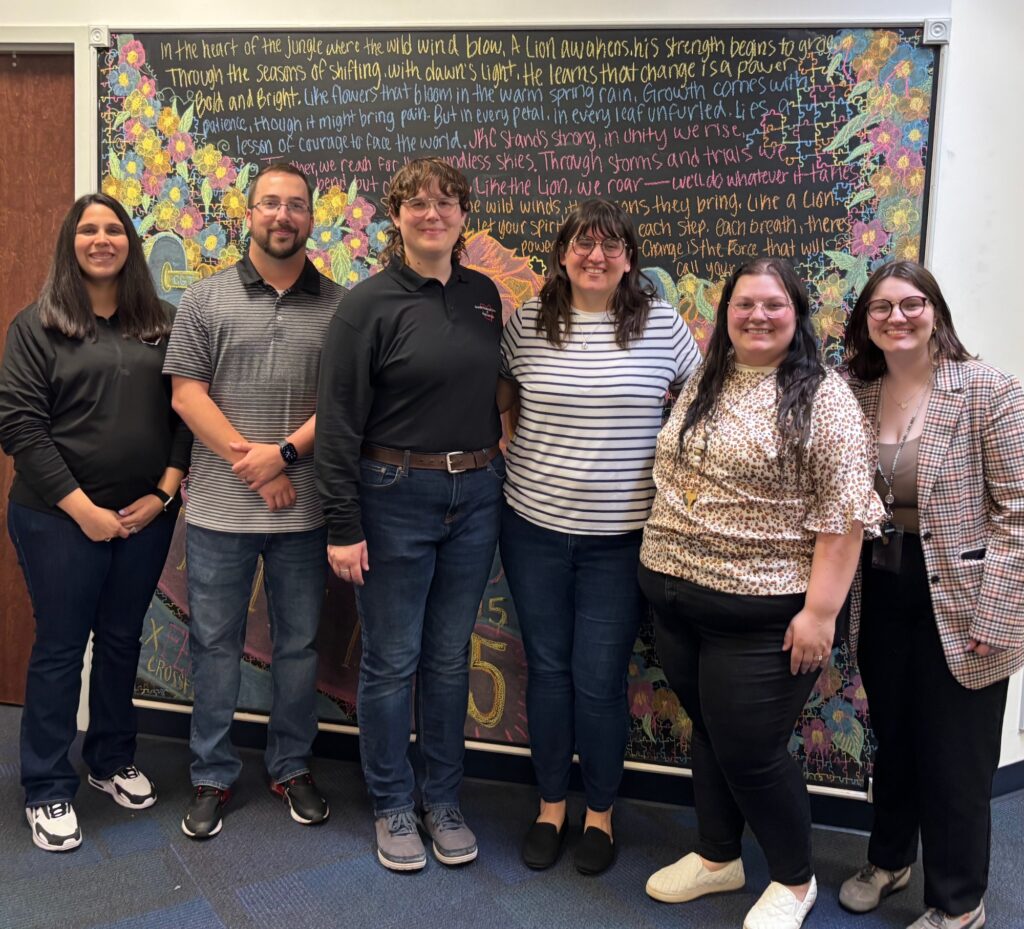
The partnership between JRC and the Cocoon has been ongoing for a while, with the Cocoon serving as the center’s advocacy group for the Prison Rape Elimination Act, Crawford explained. They would be the contact if JRC ever had an issue.
The Clothesline Project was the first time the Cocoon has presented at JRC. Johnson-Walsh, who previously worked at the Cocoon prior to joining JRC as a counselor, suggested the Cocoon bring the Clothesline Project to the center as one of the Sexual Awareness Month presentations.
“It’s wonderful that we can connect with other organizations,” Johnson-Walsh said. “We are very perpetrator-oriented, and the Cocoon is very survivor-oriented. To bridge that gap is huge.”
The project also developed into conversations about additional ways they could work together, such as support groups, Crawford said.
The intention of the activity was for the boys to hear straight from the survivors what they are feeling, Johnson-Walsh told the group. “I want you to really think about if you are having some self-hatred, whether or not that fits in, because right now we’re trying to focus on them. If you’re focusing on yourselves, you need to re-evaluate,” she said.
“The goal is for you to be able to reflect on either the people you already know in your life that have experienced violence, the people you will someday know that have experienced violence or people you yourself have hurt. I want you to understand these are their stories.”
“This is definitely a dual-purpose situation,” Director Crawford said. “I don’t think they like talking about this stuff, but I think they understand the value of it, of being more aware.”
Many of the teens haven’t thought about how their actions impact others, which is a typical teen thought process, he said, which is why JRC staff spends time talking about domestic and sexual violence. “It’s important they understand ‘It’s about more than me.’”
They may have made a bad decision or committed a crime, but there are real people on the other side who may or may not have had a normal life after what happened to them. “The boys start to realize they aren’t the only ones whose lives have changed,” Crawford said.
The discussion about the Clothesline Project will continue for weeks, he said. They will be talking about what responsibility they have moving forward to prevent physical and sexual violence.
Johnson-Walsh said, “Some of you have friends who have done really terrible things and you have protected them. It’s our responsibility here to change the culture because you can go to that friend and tell them they can’t treat someone like that,” Johnson-Walsh said. “You all have the chance to prevent violence.”
With community reintegration an important part of the treatment process, thinking about the impact if they see their victims again is something they might not think about. “This makes it so real,” Crawford said.
“Going through this treatment is setting you up for the best place to make those amends, make that restitution right, because all of you know that you have to earn that,” Johnson-Walsh said. “Part of being a good human is being able to understand that in relationships, it’s more than just you. Whether we’re talking about going forward or what’s already happened, these are things you should spend time thinking about.”

